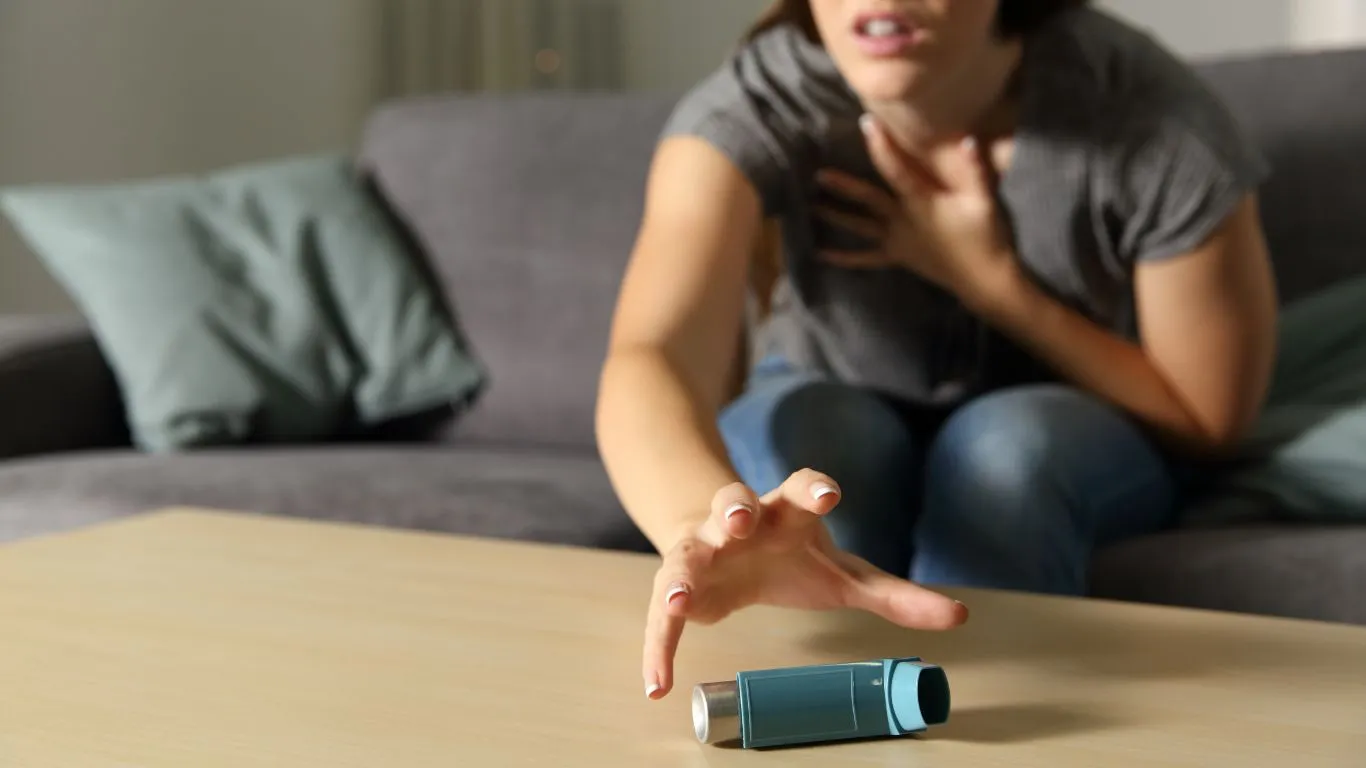Best Practices for Reducing Asthma Symptoms at Home – Breathe Easier Today!
Living with asthma can feel like walking a tightrope—one moment, you’re breathing easy, and the next, something as simple as dust can throw you into a wheezing spiral. Trust me, as someone who’s spent years helping asthma patients regain control over their symptoms, I know the struggle all too well. The good news? You don’t need a doctor’s visit every time your breathing gets rough. You can make a world of difference just by tweaking your home environment. That’s why today, we’re diving into best practices for reducing asthma symptoms at home. Let’s make your living space a safe, breathable haven!
Understanding the Link Between Your Home and Asthma
Your home should be your sanctuary, but if you’re not careful, it can be a hidden minefield of asthma triggers. From dust mites burrowing into your mattress to pet dander floating in the air, allergens love to settle indoors. Even household cleaning products—yes, those “fresh-smelling” sprays—can send your lungs into overdrive. So, what’s the fix? Awareness is the first step, followed by some strategic changes.
Keep Your Indoor Air Clean and Fresh

Let’s talk about the air you breathe. Many people assume that being indoors means they’re safe from pollutants, but indoor air can be even more contaminated than the outside. Here’s how you can clean up the air in your home:
Invest in a Quality Air Purifier
If you don’t already have one, an air purifier with a HEPA filter is a game-changer. It traps microscopic allergens like dust, pollen, and pet dander, making the air much easier on your lungs. I always recommend keeping one in the bedroom, since you spend a good portion of your day there.
Open Those Windows (When the Air Quality is Good)
Fresh air circulation helps prevent stale, allergen-filled air from lingering. However, if the pollen count is high or there’s wildfire smoke in the area, keep those windows shut and rely on your purifier.
Maintain Proper Humidity Levels
Too much humidity breeds mold and dust mites, while air that’s too dry can irritate your airways. Aim for a humidity level between 30-50%. A dehumidifier can help in damp areas, and a humidifier can keep the air from getting too dry in winter.
Get Serious About Dust and Allergens

Dust might seem harmless, but for an asthma sufferer, it’s a ticking time bomb. Here’s how to keep it under control:
Use Hypoallergenic Bedding
Dust mites love to hide in pillows, mattresses, and blankets. A good set of hypoallergenic covers for your mattress and pillows can keep them at bay.
Vacuum the Right Way
Not all vacuums are created equal! Choose one with a HEPA filter to trap tiny allergens instead of blowing them back into the air. Vacuum carpets, rugs, and even upholstered furniture at least twice a week.
Declutter Your Home
Clutter collects dust like a magnet. If you have piles of books, stuffed animals, or unused decor sitting around, consider storing them in sealed containers or reducing what you keep out in the open.
Be Mindful of Household Cleaning Products

Ironically, many products meant to keep your home clean can actually trigger asthma symptoms. Those heavy-duty cleaners with strong fragrances? Not your friend.
Go Fragrance-Free
Opt for unscented or natural cleaning products to avoid inhaling harsh chemicals. Many asthma-friendly brands make plant-based cleaners that are just as effective without the nasty fumes.
Skip Aerosol Sprays
Air fresheners, hairsprays, and aerosol disinfectants release tiny particles into the air that can irritate your lungs. Stick to pump sprays or homemade alternatives.
DIY Cleaning Solutions
Want a safer option? Mix vinegar and baking soda for an all-purpose cleaner that cuts through grime without the risk of a reaction.
By now, we’ve tackled some major home triggers—air quality, dust, and chemical irritants. But asthma management isn’t just about eliminating threats. It’s also about creating an environment that actively supports healthy breathing. Let’s dive into some overlooked but powerful strategies that can make your home truly asthma-friendly.
Pet Lovers, Here’s How to Keep Your Furry Friends Without the Wheeze

As much as we adore our pets, they can be a sneaky trigger for asthma symptoms. Pet dander—those microscopic skin flakes—floats around, clings to fabrics, and settles into carpets, making breathing difficult. But don’t worry, you don’t have to say goodbye to your four-legged friend. Here’s how to keep both your lungs and your pet happy.
Set Pet-Free Zones
Your bedroom should be an asthma-safe sanctuary, which means no pets allowed. It might be hard to resist those puppy-dog eyes, but keeping your sleeping space free of pet dander will significantly reduce nighttime symptoms.
Groom and Bathe Regularly
Giving your pet a weekly bath (or even just a thorough brushing outside) helps cut down on dander and loose fur floating around your home. And if you have a long-haired breed, consider professional grooming.
Choose the Right Flooring
Carpets are dander magnets. If you’re serious about reducing asthma triggers, consider switching to hardwood, tile, or laminate. These surfaces don’t trap allergens the way carpets do and are much easier to clean.
Prevent Mold and Mildew from Invading Your Home

Mold is one of the worst asthma triggers out there. It thrives in damp, poorly ventilated areas and releases spores into the air that can make breathing miserable. If you’ve ever walked into a musty-smelling bathroom and felt your chest tighten, you know exactly what I mean.
Fix Leaks Immediately
Even a tiny drip from a sink or ceiling can lead to mold growth. Inspect areas under sinks, around windows, and in basements for hidden leaks. The faster you fix them, the less chance mold has to settle in.
Ventilate, Ventilate, Ventilate!
Good airflow is key to preventing moisture buildup. Use exhaust fans in bathrooms and kitchens, and if you don’t have one, crack open a window while showering or cooking to let the steam escape.
Use Mold-Resistant Products
If you’re remodeling, consider mold-resistant drywall or paint for moisture-prone areas. These materials are designed to prevent mold growth before it even starts.
Be Wary of Scented Products
We all love a fresh-smelling home, but artificial fragrances can be a hidden asthma trigger. Many scented candles, plug-in air fresheners, and perfumes contain chemicals that irritate airways.
Switch to Essential Oils (With Caution)
Natural essential oils can be a better alternative to synthetic fragrances, but some can still be strong irritants. If you use them, make sure they’re diluted and avoid direct inhalation.
Go for Unscented Everything
From laundry detergent to shampoo, switching to fragrance-free products can make a big difference in reducing airborne irritants.
Final Thoughts for a Breathable Home
Making your home asthma-friendly isn’t about perfection—it’s about small, intentional changes that add up. With the right strategies, you can turn your space into a place where you can breathe freely and feel comfortable.
So far, we’ve covered everything from improving indoor air quality to managing pet dander and preventing mold. But sometimes, the best way to understand the power of these changes is through real-life examples. Let’s look at how these strategies have transformed the lives of actual asthma sufferers.
Case Studies & Real-Life Examples

Case Study 1: Maria’s Battle with Nighttime Asthma
Maria, a 42-year-old teacher, had suffered from severe nighttime asthma attacks for years. She tried medication adjustments, but nothing worked until she made changes at home. After switching to hypoallergenic bedding and using an air purifier in her bedroom, her symptoms decreased dramatically. Within a month, she was waking up refreshed instead of gasping for air.
Case Study 2: Jason’s Fight Against Mold Allergies
Jason, a father of two, noticed that his son’s asthma worsened whenever they used the basement. A closer inspection revealed mold growing behind a bookshelf. After investing in a dehumidifier and replacing water-damaged materials, his son’s asthma flare-ups decreased significantly.
Case Study 3: Sarah’s Struggle with Pet Allergies
Sarah, a dog owner, always had a lingering cough. Despite her love for her golden retriever, she knew she had to make adjustments. She created a pet-free bedroom, bathed her dog weekly, and upgraded to a HEPA-filter vacuum. Within weeks, she could finally enjoy her home without constantly reaching for her inhaler.
Key Takeaways: What You Need to Remember
If there’s one thing I’ve learned from working with asthma patients, it’s that small, consistent changes can make a world of difference. Here are the key takeaways:
- Keep indoor air clean and well-circulated with purifiers, proper ventilation, and regular cleaning.
- Manage dust and allergens with hypoallergenic bedding and HEPA-filter vacuums.
- Reduce exposure to strong scents by choosing fragrance-free or natural cleaning products.
- Prevent mold and mildew by controlling humidity and fixing leaks.
- Take special precautions if you have pets, like regular grooming and keeping them out of bedrooms.
FAQs
Can houseplants help with asthma?
Some houseplants can improve air quality by absorbing toxins, but they can also collect dust and mold. If you want plants, choose low-maintenance, asthma-friendly options like snake plants or peace lilies.
What’s the best way to clean my home without triggering asthma?
Use a damp microfiber cloth instead of dry dusting, vacuum with a HEPA filter, and avoid harsh chemical cleaners. Stick to natural alternatives like vinegar and baking soda.
Should I avoid carpet altogether?
If possible, yes. Hard flooring like wood or tile is better for asthma sufferers. If you must have carpet, vacuum it frequently and deep clean it regularly.
Bonus: Additional Resources & DIY Tips
Want to dive deeper into asthma-friendly home strategies? Here are some helpful resources:
- Centers for Disease Control and Prevention (CDC) – Asthma Management
- American Lung Association – Indoor Air Quality Tips
- Environmental Protection Agency (EPA) – Mold Prevention Guide
And if you’re a fan of DIY solutions, try this homemade air-purifying spray:
- 1 cup distilled water
- 1 tablespoon baking soda
- 10 drops eucalyptus or tea tree essential oil
Mix and spray lightly on fabrics to help reduce allergens naturally.
Appendix
Table: Quick Reference Guide for an Asthma-Friendly Home
| Problem | Solution |
|---|---|
| Dust & Allergens | HEPA-filter vacuum, hypoallergenic bedding |
| Pet Dander | Groom pets regularly, create pet-free zones |
| Mold | Fix leaks, use a dehumidifier |
| Fragrances | Switch to fragrance-free cleaning products |
Disclaimer
This article is for informational purposes only and does not replace medical advice. If you experience severe asthma symptoms, consult a healthcare professional.
Call to Action
Making your home asthma-friendly doesn’t have to be overwhelming. Start small—pick one or two changes from this guide and implement them today. Your lungs will thank you! If you’ve found this helpful, share it with someone who might need it.

Bianca Nala is a compassionate Nurse Practitioner with a strong background in primary and respiratory care. As a health writer for Healthusias.com, she combines her clinical expertise with a talent for clear, relatable storytelling to help readers better understand their health. Bianca focuses on topics like asthma, COPD, chronic cough, and overall lung health, aiming to simplify complex medical topics without losing accuracy. Whether she’s treating patients or writing articles, Bianca is driven by a single goal: making quality healthcare knowledge accessible to everyone.






